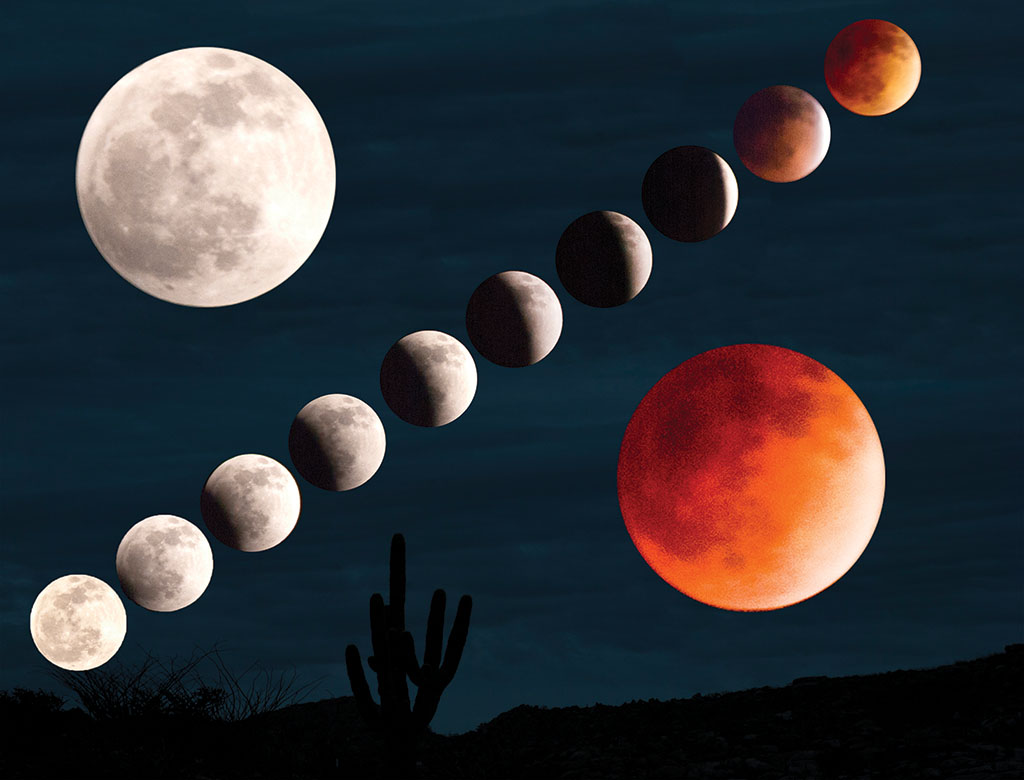
Eclipse photo from Richard Spitzer
—Nights would be much, much darker. The next brightest object in the night sky is Venus but it still wouldn’t be enough to light up the sky—a full moon is nearly two thousand times brighter than Venus is at its brightest.
—Without the moon, a day on earth would only last six to twelve hours. There could be more than a thousand days in one year! That’s because the earth’s rotation has slowed down over time thanks to the gravitational force, or pull of the moon, and without it our days would continue to go by in a blink. Scientists estimate that without the tides, the earth would spin about three to four times faster than it does now and that would have big implications on our life forms. First, winds on earth would be so fast and powerful that few things could grow. If plants did exist, they would be short, deeply rooted and ground-hugging. And any land animals that existed would be all short, squat and stout. Birds and any flying insects (pollination?) would be impossible.
—A moonless earth would also change the size of ocean tides and the tidal zones created by them—making them about one-third as high as they are now.
—Thanks to our moon, Earth’s axis stays tilted around 23.5 degrees. But even with the stabilizing effect of the moon, the earth’s axial tilt still varies by about a degree over the course of hundreds of thousands of years. When the earth is tilted more, the seasons are more extreme. The summers are hotter and the winters are colder, and when the tilt is less, then the seasons are moderated, so the summers are cooler and the winters are warmer. This one degree change in tilt over hundreds of thousands of years is what caused the ice ages and later warming trends which caused the ice to melt. As an example, without a large moon, the rotational axis of Mars has varied over a span of 13 to 40 degrees over the last 10 to 20 million years. Without a moon the tilt of our earth’s axis would vary by up to 10 degrees, which would have huge consequences for life on earth. This could create some very wild weather. Ice ages could potentially be 10 times as bad as they have been. With climate shifts that dramatic, glaciers would cover the entire planet except for possibly a small band at the equator. Whatever life did exist would exist in a concentrated band at the equator.
Life on Earth would be much different without the moon. In fact, it’s safe to say that the large diversity of life we find on Earth wouldn’t exist at all.
Our next SkyGazer meeting will be held at the MountainView Clubhouse, Sonoran Room, at 7:00 p.m. on February 14. Our next evening star parties (telescopes looking at the sky from the darkened SaddleBrooke softball field) are Wednesday, February 10, Tuesday, March 8 and Sunday, April 10 at dusk.
